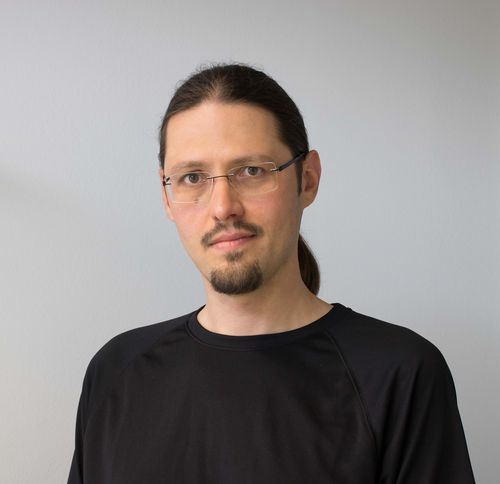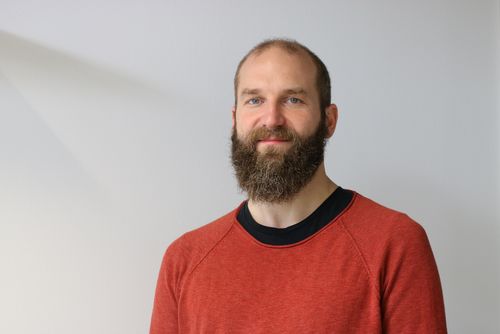Miniature Sensors for Synovial Fluid Analysis
When arthritis, osteoarthritis, or an inflammatory arthritis such as gout develops, it is accompanied by changes to the synovial fluid. In gout, for example, crystals form in the fluid. Currently, to determine how advanced the condition is, laboratory technicians must examine a sample under the microscope and count the number of crystals. With the aid of microsensors, however, which work like tiny scales, it should soon be possible to detect any drop in the crystals in the synovial fluid and to determine their proportion. Microsensors to measure flow characteristics may also offer significant advantages in detecting other joint ailments, for example arthritis or osteoarthritis.
Project Details
Seed Project
Project Manager
Thomas Voglhuber-Brunnmaier
Call
1/2016
In gout research, microsensors can be used for the long-term supervision of crystal formation and to examine the tendency of crystallization when chemical influences are altered. “Currently, we are working on the technical development of the microsensors. The great thing about them is that they are both robust and easy to use. In time, they could thus find their way into clinical practice,” says Dr. Thomas Voglhuber-Brunnmaier, head of the LIT Seed Project Sensing Arthritis with Integrated Novel Tools (SAINTS).
Not only gout, but also osteoarthritis and other forms of arthritis can be detected at an early stage using microsensors. Synovial fluid, which is more like a gel than a liquid, has particular flow characteristics in a healthy individual. To keep friction in the joint down to an acceptable level, it may not be either too liquid or insufficiently elastic. This prevents wear on the cartilage, which would lead to abrasion and inflammation.
Currently, painful joints are usually examined using X-rays. Leaving aside the issue of potential side effects, this means that any actual erosion of the joint is only detected when it has advanced far enough to be visible on the X-ray. Other diagnostic methods currently in use, which examine the synovial fluid, require relatively large amounts of that fluid.
Microsensors, however, would require a single drop of synovial fluid to detect changes. At this time, Dr. Erwin Reichel is using his SAINTS project to develop two different methods of analysis using microsensors. In the first approach, the resonance of vibrating structures is used to determine viscoelasticity. This is a reliable measure for the concentration and composition of hyaluronic acid, which is a major component of the synovial fluid. The second approach uses an electrical current to measure how far a drop of synovial fluid can be stretched − which is also an indication of the condition the fluid is in. “Microsensors have been in use for quite some time, for example to measure the flow characteristics of oil. However, biological samples like synovial fluid, blood serum or the secretions from mucous membranes are far more difficult to analyze,” says Reichel. In cooperation with chemists from the JKU, this has now become possible.
The newly-developed procedures are now being thoroughly tested using synthetic reference fluids, in order to establish the medical applicability of measured values.
Dr. Thomas Voglhuber-Brunnmaier studied mechatronics at the JKU and initially specialized in electrical measurement technology. After acquiring professional experience at a sensor company, Dr. Voglhuber took the opportunity to write his dissertation under the academic supervision of Univ. Prof. Dr. Bernhard Jakoby at the JKU Institute of Microelectronics and Microsensors. "Prof. Jakoby is an excellent scientist and I was very fortunate to be able to have him as my dissertation supervisor. I learned many new things in various areas."
Dr. Voglhuber has received numerous awards and accolades for his dissertation.
His current research focuses on modeling sensor structures, signal processing for measurement data evaluation, and developing fluid sensor concepts.

Dr. Erwin K. Reichel studied mechatronics at the JKU with a focus on electrical measurement and signal processing. He completed his Diploma degree thesis in the field of acousto-optics. He completed his dissertation at the Institute of Microelectronics and Microsensors focusing in particular on the viscosity measurement of complex fluids.
Dr. Reichel spent three years at the University of Leuven in Belgium as a post-doctoral candidate working on a project for the European Space Agency ESA. "We developed a system to explore and study crystallization processes on the ISS space station."
Dr. Reichl's considers tailoring sensor systems for liquid analysis to be his most important research area. He has already received two patents.
